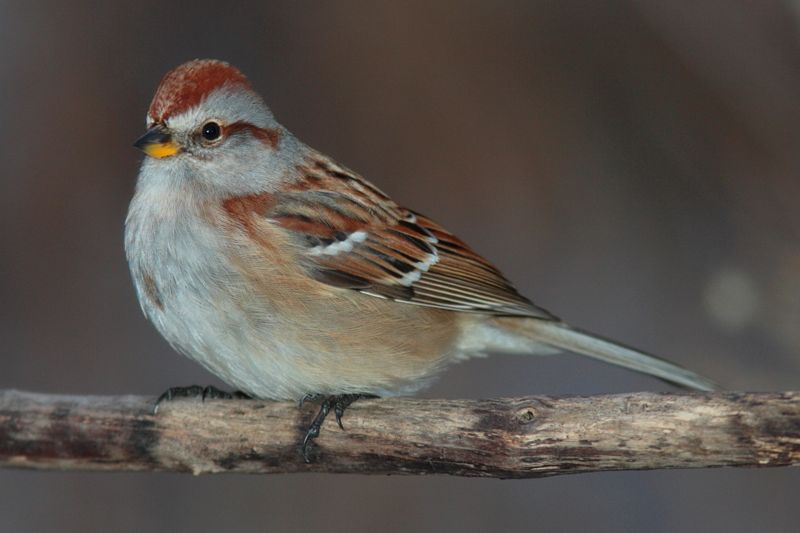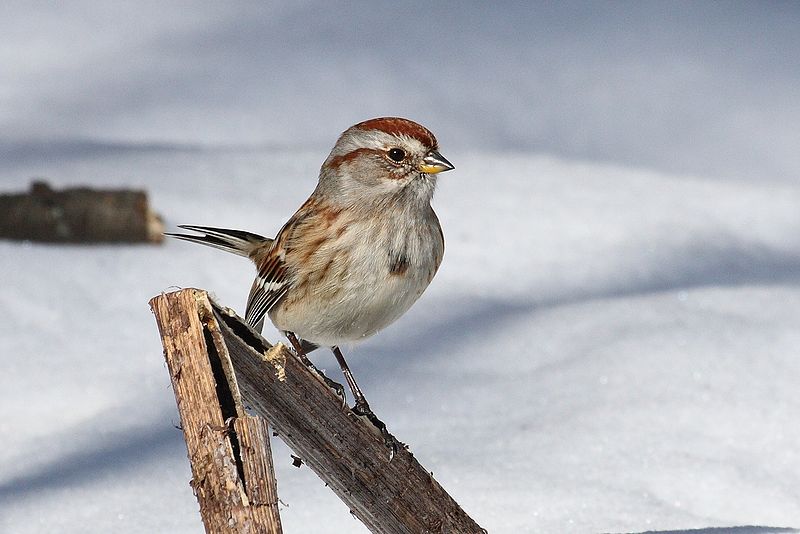american tree sparrowSpizella arborea
Identification:
This handsome sparrow has a bicolored bill (yellow on the bottom, darker on top), rusty red patch on its head, a rusty colored streak through the eye, and (often) a central dark spot in the breast. The rest of its plumage is streaky brown and tan, and it has two white wing bars. Behavior: The American Tree Sparrow mostly forages on the ground, vigorously seeking seeds. Its diet varies significantly by season; during breeding season it consumes far more insects and larva, and in other seasons more seeds. The name “tree sparrow” is a misnomer applied by early European observers. What brings it to the SBG? Food and cover. In its winter range the American Tree Sparrow inhabits fields, scrubby areas, open forests, and even urban or suburban backyards. In January of 2015 a flock of American Tree Sparrows was seen roaming among the leftover seedheads in the Demonstration Garden, especially relishing seeds from Agastache, New England Aster, Blue Vervain, Rudbeckia, Echinacea, and Cup Plant. When can I see it? Only in late fall and winter; Pennsylvania is this hardy bird’s southern wintering ground. In spring it flies far north to the tundra to breed and doesn’t return until the fall. |


